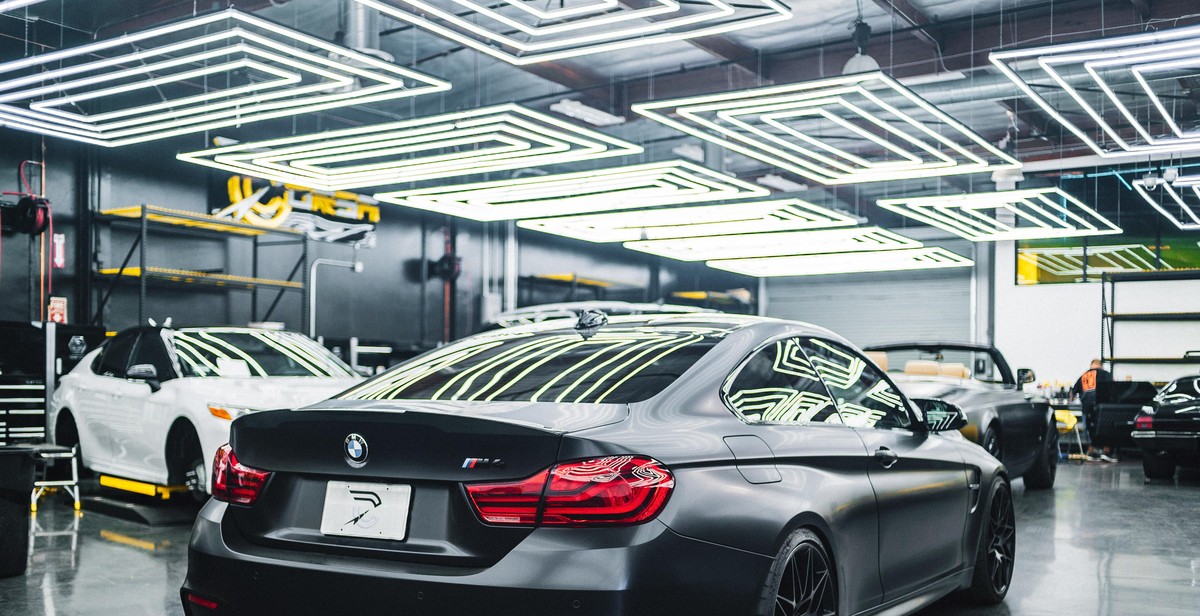Introduction: How to Reduce Energy Consumption in Electric Cars through Efficient Driving
Electric cars are becoming more popular due to their environmental benefits and cost savings on fuel. However, one of the biggest challenges for electric car owners is managing their energy consumption. Efficient driving can help to reduce energy consumption and extend the driving range of electric cars. In this article, we will explore the importance of reducing energy consumption in electric cars and provide tips on how to drive efficiently to achieve this goal.
Why is reducing energy consumption important in electric cars?
Electric cars rely on batteries to power their electric motors. The energy stored in the battery determines the driving range of the car. The more energy the car uses, the shorter the driving range will be. Therefore, reducing energy consumption is crucial to maximize the driving range of electric cars.
In addition to extending the driving range, reducing energy consumption also helps to save money on electricity bills. Electric cars require charging, which can be expensive if the energy consumption is high. By driving efficiently, electric car owners can reduce their charging costs and save money in the long run.
In the next section, we will discuss some of the best practices for efficient driving that can help to reduce energy consumption in electric cars.

Understanding Energy Consumption in Electric Cars
Electric cars have become increasingly popular in recent years due to their low environmental impact and cost savings on fuel. However, to truly maximize these benefits, it is important to understand the factors that affect energy consumption in electric cars and the different types of energy consumption involved.
Factors that affect energy consumption
There are several factors that can affect the energy consumption of electric cars:
- Driving habits: Aggressive driving, such as rapid acceleration and hard braking, can significantly increase energy consumption. On the other hand, smooth and steady driving can help conserve energy.
- Terrain: Driving uphill or on rough terrain can require more energy than driving on flat or smooth roads.
- Temperature: Extreme temperatures, both hot and cold, can affect the battery’s performance and decrease energy efficiency.
- Speed: Driving at high speeds can increase energy consumption, while driving at lower speeds can help conserve energy.
- Vehicle weight: A heavier vehicle requires more energy to move, so reducing the weight of the car can help improve energy efficiency.
Types of energy consumption in electric cars
There are two main types of energy consumption in electric cars:
- Motive energy: This is the energy used to move the car forward. It is consumed by the electric motor and is affected by the factors listed above.
- Auxiliary energy: This is the energy used to power the car’s accessories, such as the radio, air conditioning, and lights. While this energy consumption is relatively small compared to motive energy, it can still impact the overall energy efficiency of the car.
| Type of Energy Consumption | Factors that Affect Energy Consumption |
|---|---|
| Motive Energy | Driving habits, terrain, temperature, speed, and vehicle weight |
| Auxiliary Energy | Use of accessories such as air conditioning, radio, and lights |
By understanding the factors that affect energy consumption and the types of energy consumption involved, electric car owners can take steps to reduce their energy consumption and maximize the benefits of electric cars.

Efficient Driving Techniques to Reduce Energy Consumption
Driving an electric car is a great way to reduce your carbon footprint and save money on fuel costs. However, to get the most out of your electric car, it is important to adopt efficient driving techniques that can help you reduce energy consumption and extend your car’s range. Here are some tips to help you drive your electric car more efficiently:
Smooth acceleration and braking
One of the most effective ways to reduce energy consumption in an electric car is by accelerating and braking smoothly. Sudden acceleration and hard braking can waste a lot of energy and reduce your car’s range. By accelerating gradually and braking gently, you can conserve energy and extend your car’s range. It is also important to avoid unnecessary acceleration and braking, such as accelerating quickly to a red light or braking hard when you don’t need to.
Maintaining a steady speed
Another way to reduce energy consumption in an electric car is to maintain a steady speed whenever possible. Constantly speeding up and slowing down can waste a lot of energy and reduce your car’s range. By maintaining a steady speed, you can conserve energy and extend your car’s range. It is also important to avoid driving at high speeds, as this can increase energy consumption and reduce your car’s range.
Anticipating traffic and road conditions
Anticipating traffic and road conditions can also help you drive your electric car more efficiently. By looking ahead and anticipating what’s coming up, you can adjust your speed and driving style to conserve energy and extend your car’s range. For example, if you see a red light ahead, you can start slowing down gradually to avoid braking hard and wasting energy. Similarly, if you see a hill ahead, you can adjust your speed and driving style to conserve energy and maintain your car’s range.
Reducing the use of air conditioning and heating
The use of air conditioning and heating can also have a significant impact on energy consumption in an electric car. To conserve energy and extend your car’s range, it is important to reduce the use of air conditioning and heating whenever possible. For example, you can roll down the windows or use a fan instead of turning on the air conditioning. Similarly, you can wear warm clothes or use a heated seat instead of turning on the heating.
By adopting these efficient driving techniques, you can reduce energy consumption in your electric car and extend your car’s range. Not only will this help you save money on fuel costs, but it will also help you reduce your carbon footprint and contribute to a cleaner environment.

Other Ways to Reduce Energy Consumption in Electric Cars
Besides efficient driving, there are other ways to reduce energy consumption in electric cars. These include:
Preconditioning the Car
Preconditioning the car means setting the desired temperature of the cabin and the battery before starting the car. This can be done while the car is still charging. By doing so, the car will use less energy to reach the desired temperature compared to heating or cooling the car while driving. Some electric cars come with a built-in preconditioning feature that can be controlled through a smartphone app.
Using Regenerative Braking
Regenerative braking is a feature that allows the car to convert kinetic energy into electrical energy that can be stored in the battery. This is done by using the electric motor as a generator to slow down the car. By doing so, the car recovers some of the energy that would have been lost as heat during braking. This feature can be activated by using the brake pedal or by shifting the car into a lower gear.
Minimizing the Use of Accessories
Accessories such as air conditioning, headlights, and sound systems can use a significant amount of energy. To reduce energy consumption, it is recommended to minimize the use of these accessories. For example, turning off the air conditioning when it is not needed can save a lot of energy. Using the car’s natural ventilation system instead of the air conditioning can also help reduce energy consumption.
| Method | Pros | Cons |
|---|---|---|
| Efficient Driving | – Can be done by anyone – No additional cost |
– Requires practice and discipline – May not be suitable for all driving conditions |
| Preconditioning the Car | – Can be done while the car is charging – Improves comfort |
– Requires planning – May not be available on all cars |
| Using Regenerative Braking | – Recovers energy that would have been lost – Reduces wear and tear on brakes |
– May not be suitable for all driving conditions – May not be available on all cars |
| Minimizing the Use of Accessories | – Saves energy – Reduces load on the battery |
– May reduce comfort and convenience – May not be suitable for all driving conditions |
By combining these methods, it is possible to significantly reduce energy consumption in electric cars. However, it is important to note that the effectiveness of these methods may vary depending on the car model, driving conditions, and personal preferences.

Conclusion
Electric cars are becoming increasingly popular due to their eco-friendly nature, but their energy consumption remains a concern. However, by adopting efficient driving techniques, electric car owners can significantly reduce their energy consumption and save money on fuel costs.
Key Takeaways
- Efficient driving techniques such as regenerative braking, coasting, and avoiding high speeds can significantly reduce energy consumption in electric cars.
- Planning your route ahead of time and avoiding unnecessary idling can also help conserve energy.
- Regular maintenance of your electric car’s tires and brakes can also go a long way in reducing energy consumption.
Final Thoughts
With the increasing concern for the environment, it is crucial for electric car owners to adopt efficient driving techniques to reduce their energy consumption. By following the tips outlined in this article, electric car owners can not only save money on fuel costs but also contribute to a cleaner and greener future.
| Efficient Driving Techniques | Benefits |
|---|---|
| Regenerative Braking | Recovers energy lost during braking |
| Coasting | Reduces the need for frequent braking and acceleration |
| Avoiding High Speeds | Reduces wind resistance and energy consumption |
| Route Planning | Reduces unnecessary driving and idling |
| Maintenance | Ensures efficient operation of tires and brakes |
